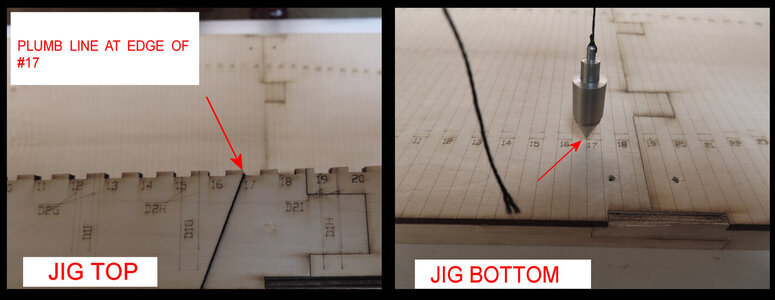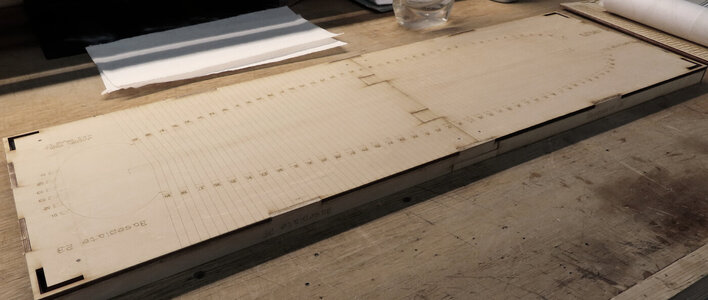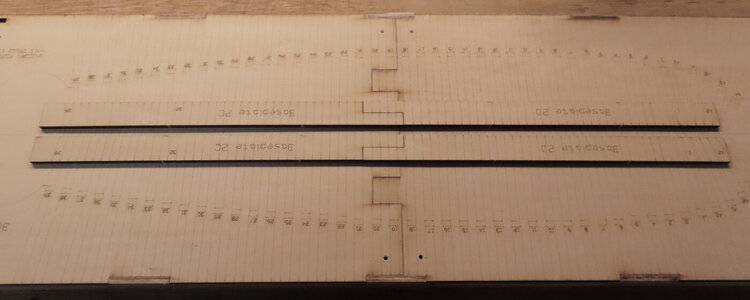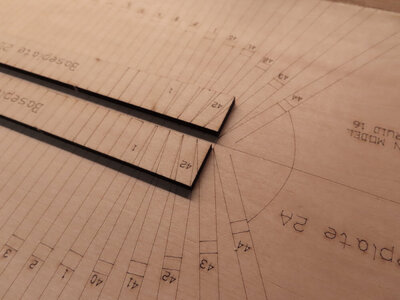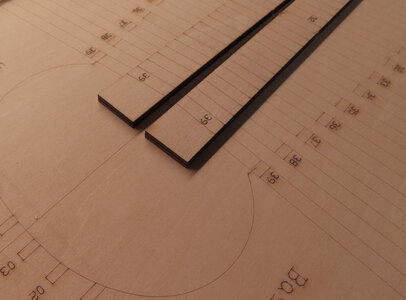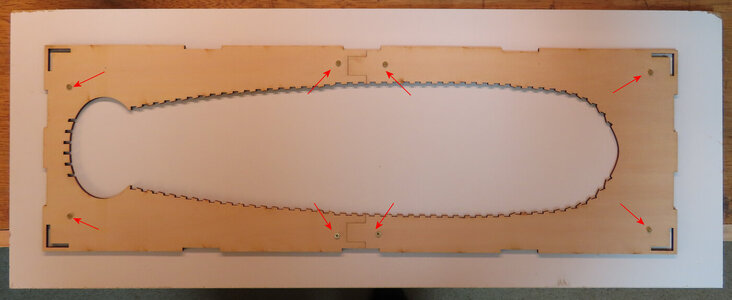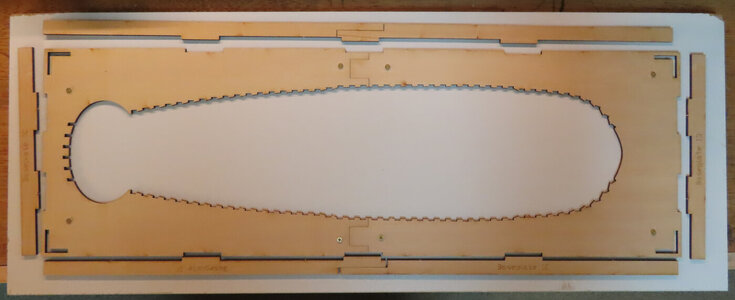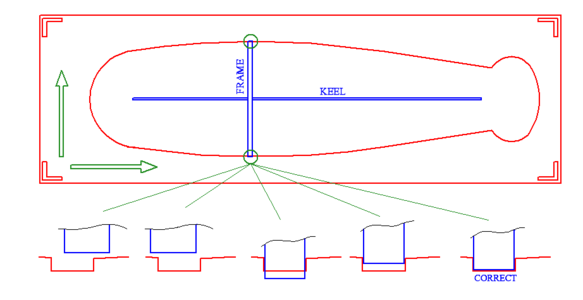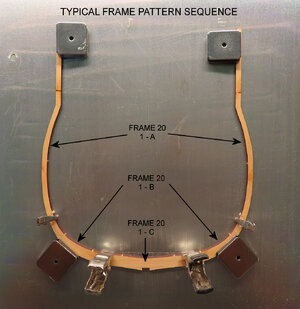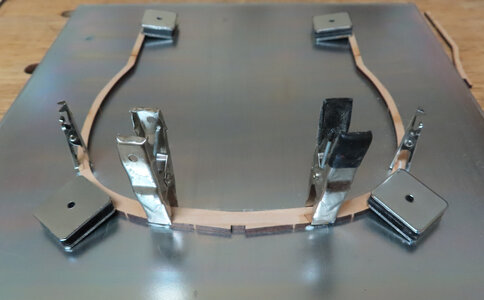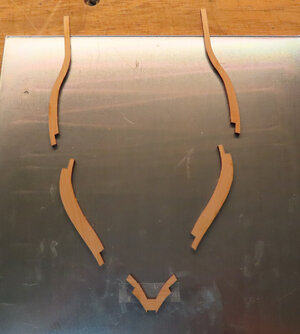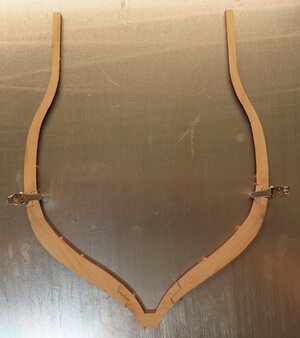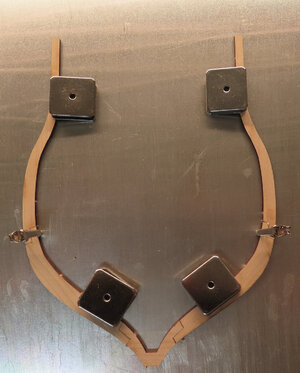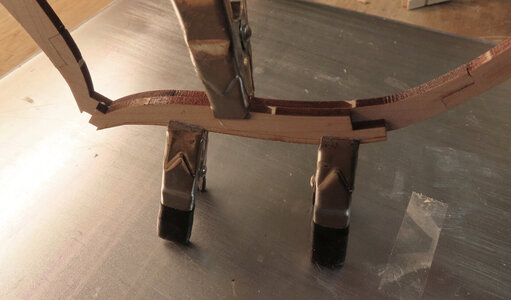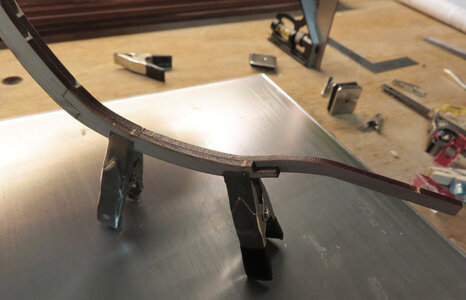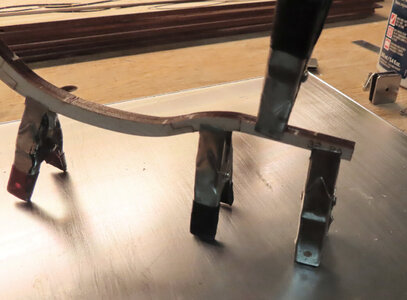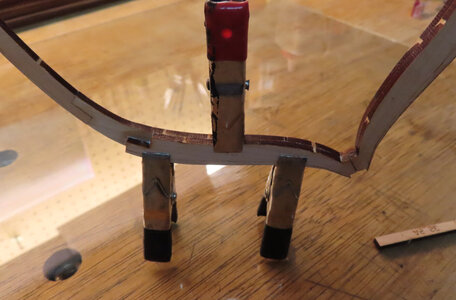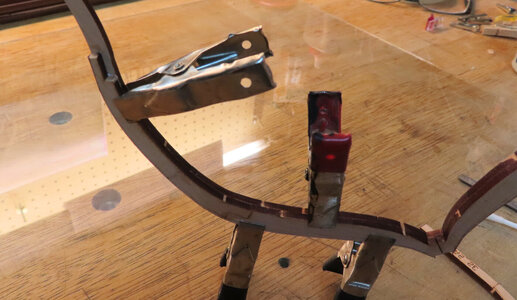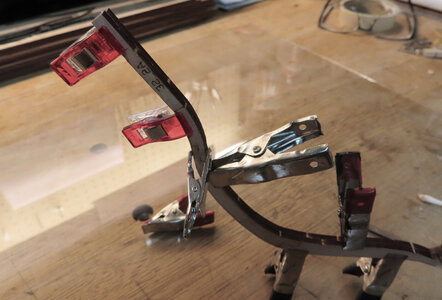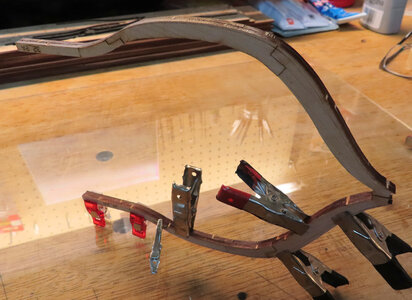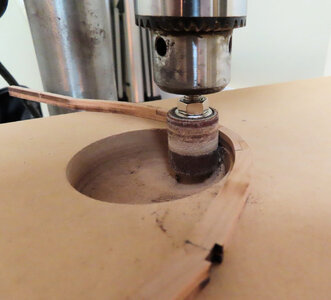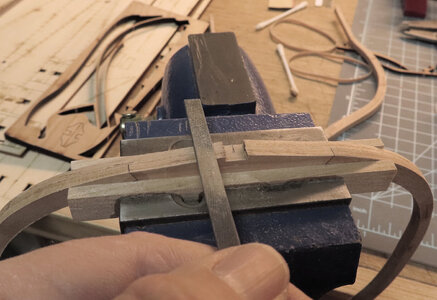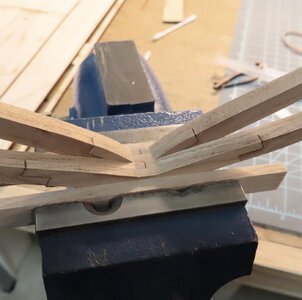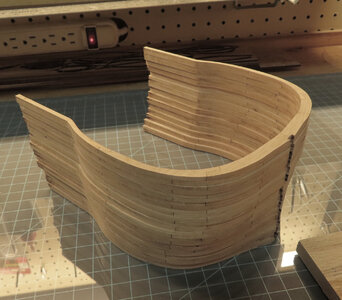Good to hear that you plan to do so, and that you also have a lot of projects going on. I envy those that can do multiple projects at the same time. Seems I can only focus all my energy on one !!! LOL
Well, at any rate, here I am and I have the full box assembled. Ignore the Machinist Square as it does show a little off on the 90° upright support. Things are not adjusted just yet.
DO NOT GLUE THE UPRIGHTS SUPPORTS JUST YET - - WAIT
EDIT: I highly suggest waiting until you have a few Frames constructed BEFORE you glue all the upright supports. Not only does the "Fore and Aft" position of the Jig Box needs to be fine-tuned, but also the Port and Starboard fine-tuning of the Box needs adjustment as you also want the Frames to sit correctly in that fashion too. PLEASE review and you can skip ahead to POST #32 for a detailed CAD drawing.
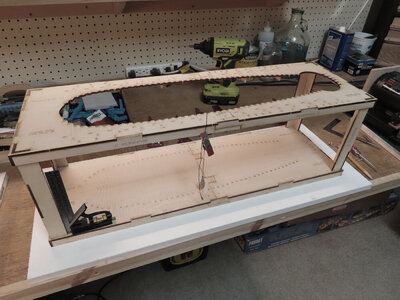 NOTE: AT THIS POINT, DO NOT GLUE THE SIDE SUPPORTS. I will explain it.
NOTE: AT THIS POINT, DO NOT GLUE THE SIDE SUPPORTS. I will explain it.
The reason is that when I first assembled the side supports and set the box upright, the first thing I did was to grab my Plumb line. To my (sinking feeling that I had), I noticed that the Plumb was NOT lined up correctly on the FRAME NUMBERS.
For instance, I would put the Plumb Line on the Top edge of the Jig (let's say at #17 which is about a good halfway point, THEN I could not believe that the Plumb was resting at the
MIDDLE of #17 instead of at the edge of #17 which it should. I could not figure out what was wrong. It was like the upper (or Lower) jig was shifted about 2.5 mm. This can't be.
So, since I did not glue the side supports, I took them out so that I could lay the two half boxed Jigs on top of each other to see what the alignment problem was. . . was it that one Jig was actually longer or shorter? Well, the two Jigs DID line up --- well, that was a relief, so how come it did not line up with the box fully built?
I reassembled the upright supports. I guess somehow, reassembling the upright supports and wigging the box back and forth a little, it must have "settled" in better.
So, I secured the Plumb with a clamp. I then moved the box very slightly from side to side (left to right) until the Plumb line was right on target - then - I will now glue the uprights and while the glue is wet, then, fine-tune the box for Plumb and let the Glue set up. I found out that it takes
VERY Little movement (side to side) on the Jig Box for the Laser print alignments (at the Top and Bottom) to be off as much as almost 3 mm. This is not good of course, as you want a good 90° verticle alignment with the Frames. If you were to use a little math Trigonometry to see that only a .5mm side to side movement of the Top Jig will equate to a large like 2mm offset at the bottom. This is due to the height of the box. The taller the box, the more exaggerated offset can be with just a tad of offset at the top.
The picture below shows the upper and lower JIg and how the Plumb line is now correct. But, I shall go back and double-check some other frame numbers to see how they are. Then I took my machinist square and checked the upright supports and all seems to be 90° square there as well too.
